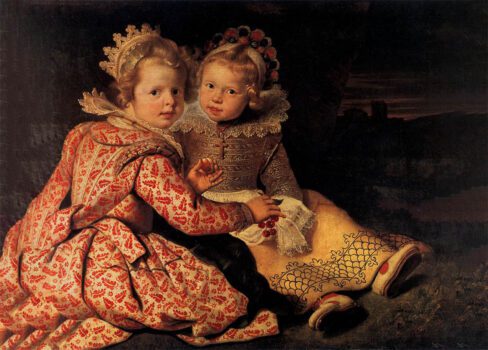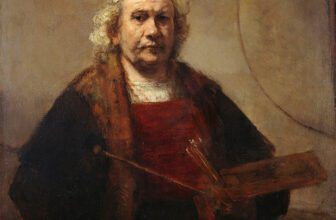Cornelis de Vos and His Famous Paintings
Cornelis de Vos (1584–1651) stands as one of the remarkable painters of the Flemish Baroque era, a time rich with artistic innovation and cultural vibrancy. Although perhaps less famous today than some of his contemporaries like Peter Paul Rubens or Anthony van Dyck, de Vos’s contributions to portraiture and religious painting during the early 17th century are invaluable and continue to be appreciated by art historians and collectors worldwide. This post explores the fascinating story of Cornelis de Vos, examines his most famous works, sheds light on his artistic legacy, and reveals where you can experience his paintings today.
The Story of Cornelis de Vos: From Antwerp to Artistic Prominence
Cornelis de Vos was born in 1584 in Antwerp, a bustling artistic hub in the Southern Netherlands, during the height of the Baroque period. Antwerp was a city famed for its flourishing art market, guilds, and wealthy patrons, providing fertile ground for aspiring artists.
De Vos apprenticed under the renowned painter Frans Francken the Younger, honing his skills in portraiture and history painting. His early exposure to Francken’s detailed and elegant style laid a strong foundation for his own artistic development. In 1606, Cornelis joined the Antwerp Guild of Saint Luke, which marked his official status as a master painter and allowed him to take on commissions and apprentices.
Cornelis de Vos quickly gained recognition for his exceptional ability to capture the psychological depth of his subjects in portraiture, which distinguished him from many of his contemporaries. He was known for his attention to detail, subtle use of color, and a warm, naturalistic approach to human representation. His reputation grew, and he became a sought-after portraitist by the Flemish aristocracy and bourgeoisie.
In addition to portraits, Cornelis de Vos also painted religious scenes and mythological subjects. His religious works often adorned churches and chapels, combining dramatic Baroque intensity with refined elegance.
What is Cornelis de Vos Known For?
Cornelis de Vos is primarily known for his portrait paintings and religious artworks. His portraits are notable for their lifelike quality, tender expression, and detailed textures, especially in the depiction of fabrics and jewelry. Unlike some contemporaries who favored grand, theatrical poses, de Vos often painted his subjects with a more intimate, approachable demeanor.
His religious paintings demonstrate his ability to blend emotion with narrative, making biblical scenes accessible and moving for his viewers. He also contributed to altarpieces and collaborated with other artists, including Rubens, who recognized his talent.
Some key characteristics that define Cornelis de Vos’s style include:
Naturalism: A subtle but clear depiction of his subjects, focusing on lifelike facial expressions.
Use of Color: Warm, rich tones that enhance the human presence and clothing textures.
Psychological Depth: His portraits often suggest the personality or mood of the sitter.
Baroque Influence: Dynamic compositions and dramatic lighting are apparent, though often more restrained than his peers.
The Most Famous Paintings of Cornelis de Vos
Though many of Cornelis de Vos’s works have been dispersed over the centuries, several stand out as exemplary and continue to captivate art lovers and scholars:
1. Portrait of a Young Woman with a Fan
This portrait is among the finest examples of his ability to render delicate fabrics and subtle expressions. The young woman is depicted with a slight smile, holding an ornate fan, dressed in elegant attire. The painting reflects de Vos’s mastery of texture and light.
2. The Holy Family with Saint Anne
This religious composition shows the Virgin Mary with the Christ Child, accompanied by Saint Anne. The gentle interaction among the figures highlights de Vos’s skill in conveying tender family moments with profound spirituality.
3. Portrait of a Family Group
Cornelis was well-known for his family portraits, and this particular painting displays his talent for grouping multiple figures naturally, creating a warm narrative of domestic life. The interaction and gazes between family members reveal individual personalities.
4. Saint Jerome in His Study
This painting represents Saint Jerome deep in contemplation, surrounded by his scholarly books and symbols. The piece reveals de Vos’s ability to infuse religious figures with intellectual intensity and human emotion.
5. Portrait of a Young Man in a Wide-Brimmed Hat
This work highlights his portraiture expertise with its subtle use of light and shadow to enhance the sitter’s character and the dramatic effect of the hat framing the face.
How Many Paintings Does Cornelis de Vos Have?
Determining the exact number of paintings by Cornelis de Vos is challenging due to the passage of time, the loss of works, and occasional misattributions. However, art historians estimate that approximately 150 to 200 paintings can be confidently attributed to him. This includes portraits, religious scenes, mythological compositions, and a handful of still lifes.
Many of his works are signed or bear stylistic markers that help attribute them correctly. Additionally, his role as an important portraitist in Antwerp means his works were widely circulated among aristocratic and wealthy families, contributing to his relatively substantial oeuvre.
The Most Expensive Painting of Cornelis de Vos
While Cornelis de Vos is not as widely auctioned or commanding prices as the likes of Rubens or Van Dyck, some of his portraits have achieved notable values in the art market.
One of his most expensive paintings to date is believed to be “Portrait of a Young Woman,” which sold for a substantial sum at a European auction in recent years, reaching into the high six figures (USD). The exact price has varied depending on provenance, condition, and market demand.
His works generally command prices that reflect his status as a prominent but less internationally famous Flemish Baroque painter, making them desirable for collectors interested in this period and region.
Cornelis de Vos’s Legacy
Cornelis de Vos left a rich artistic legacy that, while overshadowed somewhat by giants like Rubens, remains critical in understanding Flemish Baroque art and portraiture.
Influence on Portraiture
De Vos helped shape the naturalistic and intimate approach to portraiture that became popular in the early 17th century. His influence can be seen in the works of later Flemish and Dutch painters who valued psychological depth and realism.
Collaborations and Workshop
De Vos operated a successful workshop in Antwerp and trained several pupils who carried forward his stylistic principles. He also collaborated with Peter Paul Rubens, providing figures for some of Rubens’s large altarpieces, which attests to his high reputation among peers.
Preservation of Flemish Culture
Through his portraits of nobility and bourgeoisie, Cornelis de Vos captured the fashion, social status, and cultural atmosphere of Antwerp’s golden age. His religious works contributed to the Counter-Reformation efforts to inspire faith through art.
Modern Recognition
Though not always at the forefront of public knowledge, his works are prized by museums and private collectors. Exhibitions on Flemish Baroque painting often highlight de Vos as an essential figure bridging the grandeur of Rubens with a more intimate style.
Where Are Cornelis de Vos’s Paintings Located?
Today, Cornelis de Vos’s paintings are held in several prestigious museums and private collections around the world. Some key locations include:
Museums
Royal Museum of Fine Arts Antwerp (Belgium):
As his hometown, Antwerp’s museum holds some of de Vos’s most significant works, including portraits and religious paintings.The Louvre (Paris, France):
The Louvre’s Flemish and Dutch collections include a few of de Vos’s portraits and religious scenes.The Prado Museum (Madrid, Spain):
Known for its extensive collection of Baroque art, the Prado includes de Vos’s religious paintings.The National Gallery (London, UK):
A few of his portraits are part of the National Gallery’s Flemish Baroque holdings.The Hermitage Museum (St. Petersburg, Russia):
The Hermitage houses several Flemish masterpieces, including works by Cornelis de Vos.
Private Collections
Many of Cornelis de Vos’s family portraits and smaller works remain in private collections, often passed down through generations or acquired by collectors interested in Flemish Baroque art.
Appreciating Cornelis de Vos’s Enduring Artistry
Cornelis de Vos may not be the most famous name from the Flemish Baroque period, but his contributions to portraiture and religious painting are undeniably significant. His works encapsulate the warmth, realism, and emotional depth that characterize the best of early 17th-century Flemish art. From his intimate portraits capturing the subtleties of expression to his religious paintings filled with tender spirituality, de Vos’s paintings invite viewers into a world rich with humanity and artistic finesse.
His legacy survives not only in museums and galleries but also in the ongoing admiration of collectors, art historians, and anyone who values the beauty and complexity of Baroque art. Exploring Cornelis de Vos’s paintings offers a window into Antwerp’s vibrant artistic scene of the 1600s and enriches our understanding of the era’s cultural and social fabric.
If you ever find yourself visiting Antwerp or one of the major European museums, keep an eye out for Cornelis de Vos’s paintings—each one is a story, a moment in time beautifully captured by one of the Flemish Baroque’s most talented artists.




